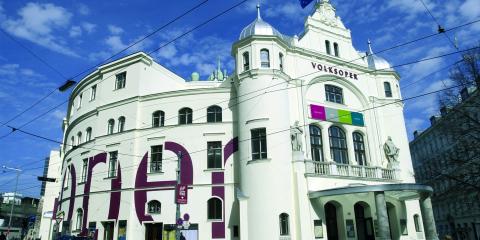-
Währinger Strasse 781090 Wien
Ballet: Marie Antoinette Volksoper Wien Sat 20.Dec 2025 19:00 replace me !Ballet: Marie Antoinette Volksoper Wien Mon 22.Dec 2025 19:00 replace me !Ballet: Marie Antoinette Volksoper Wien Fri 26.Dec 2025 19:00 replace me !Ballet: Marie Antoinette Volksoper Wien Sun 28.Dec 2025 19:00 replace me !Ballet: Marie Antoinette Volksoper Wien Sat 03.Jan 2026 19:00 replace me !Ballet: Marie Antoinette Volksoper Wien Fri 06.Feb 2026 19:00 replace me !Ballet: Marie Antoinette Volksoper Wien Wed 11.Feb 2026 19:00 replace me !Ballet: Marie Antoinette Volksoper Wien Fri 13.Feb 2026 19:00 replace me !Ballet: Marie Antoinette Volksoper Wien Sun 29.Mar 2026 18:00 replace me !Ballet: Marie Antoinette Volksoper Wien Tue 31.Mar 2026 19:00 replace me !“She is a statue of beauty when standing or sitting: grace itself when she moves,” the 18th century English writer and artist Horace Walpole wrote about the legendary Queen of France Marie Antoinette. This colourful character from French history inspired the ballet by the French choreographer Thierry Malandain that premiered with his own ensemble, Malandain Ballet Biarritz, in 2019 in the very theatre that Marie Antoinette inaugurated on 16 May 1770 to mark her wedding to Louis XVI: the Opéra Royal Château de Versailles.
Marie Antoinette’s life in Versailles is central to Malandain’s ballet, which the choreographer has created to music by two of her contemporaries – Joseph Haydn and Christoph Willibald Gluck. The piece depicts her arrival at court, her wedding day, the opening of the opera house with Jean-Baptiste Lully’s Persée – as a ballet within the ballet – the attempted escape that would ultimately be her undoing and the infamous parties and balls associated with the Queen.
In his movement language, Malandain’s individual neoclassicism meets also dance elements from another time: he reveals Baroque gestures while faithfully adhering to a vigorous modern style. In his choreography Malandain portrays a queen who not only delighted in luxury, excess and vanity, but who also spent a lifetime as the plaything of others – her mother, court society and the French media – ultimately sinking into loneliness and melancholy.
Her inclination to amusement and entertainment become means of expression for the ballet, which portrays Marie Antoinette in her greatest role as the Queen of France: “…but she was marked by a calamitous fate,” Malandain notes, “because she was a theatre-lover, but the curtain fell forever on her enjoyable comedy with the sound of a steel blade.”
(Source: volksoper.at)
Navigation:
- shopping-cart ({{mainCartInfo.itemCount}})
-
- venues
- Genres
- language:

